Yoga Origins
Yoga is a physical, mental, and spiritual discipline that originated in ancient India over 5,000 years ago. In Sanskrit, the word yoga comes from the root “yuj,” which means to attach, join, harness, yoke. A practitioner of yoga is called a yogi (male) or yogini (female). It was practiced by Brahmans or Vedic priests who documented their practices and beliefs in Yogic scriptures, the most renowned of which the Bhagavad-Gita.
Yoga was first presented systematically by Patanjali, an Ancient Indian sage, between the 4th and 5th centuries CE. His greatest works are the Yoga Sutras. Patanjali organized yoga into an eight limbed system, which would lead a yogi towards Samadhi or enlightenment. His system still influences modern yoga today.
Yoga was introduced to the West during the mid-19th century. The branch of yoga that is most commonly practiced in the West today is Hatha yoga, mostly known for its physical aspect consisting of poses or “asanas,” which are usually accompanied by breathing exercises or pranayama, followed by relaxation and meditation.
Hatha yoga was promoted by Tirumalai Krishnamacharya, an Indian yoga teacher, ayurvedic healer, and scholar, often called “the father of modern yoga.” Three of his most prominent students, Bellur Krishnamachar Sundararaja (B.K.S.) Iyengar, Tirumalai Krishnamacharya Venkata (T.K.V.) Desikachar, and Pattabhi Jois helped spread his legacy. They are know for developing the Iyengar, Viniyoga or Classical, and Ashtanga vinyasa yoga flows, respectively.
Why Iyengar Yoga?
Last week was June 21, 2022 was the 8th celebration of International Yoga Day. It inspired me to write this post about Iyengar Yoga, a practice, lifestyle, and philosophy that I have been introduced to by my high school/college boyfriend’s aunt, over 20 years ago. Ironically, my ex-boyfriend’s birthday happens to fall on June 21. Call it fate or a funny coincidence, but Iyengar Yoga has been part of my life ever since and I am forever thankful to Aunt Faina. Although I respect and practice all types of yoga styles, Iyengar yoga had and continues to have the most profound impact on my life.
Iyengar yoga is a system of yoga that is heavily focused on precise body alignment, timing, and the use of props to help the practitioner achieve perfection in asanas, making it accessible to people of all ages, body types, and physical conditions. When attending a professional Iyengar yoga studio, don’t be surprised to find students with all types of disabilities, including missing limbs.
Unlike most commercialized yoga studios, which only require a 200 teacher training course to teach, Iyengar yoga studios require their instructors to undergo a rigorous training and evaluation program before teaching. Certified Iyengar Yoga Teachers (CIYT) must pass a thorough standardized assessment in three categories: asanas, written, and teaching, maintain continuing education and practice, and show a commitment to the Iyengar style. The assessments in the United States are carried out by the Iyengar Yoga National Association of the United States (IYNAUS). The requirements are periodically updated by the Ramamani Iyegnar Yoga Institute (RIMYI) in Pune, India, which was established by B.K.S. Iyengar.
Every Iyengar yoga teacher that I studied with portrayed extreme professionalism and expertise. Once I studied with a few CIYT, it is very difficult to go back to a non-CIYT instructors. Studying Iyengar yoga helped me gain awareness and control of my body. I learned to manipulate muscles and joints that I was not aware of. Iyengar yoga significantly improved my posture and perfected every other form of fitness that I do.
Iyengar Yoga Levels
Upon entering an Iyengar Yoga class, teachers ask to be made aware of any injuries, recent illnesses, or special circumstances, such as women on their cycle, so that the practice can be adjusted to meet their needs.
Iyengar yoga students follow a strict system. Students are placed in classes based on their level of expertise. Although each Iyengar Yoga school may have a slight variation to the levels, the basic principles are the same.
Beginner or level 1 classes emphasize fundamental standing, seated, twisting, and forward bending postures and actions, as well as basic inversions, which develop a student’s steadiness, stamina, and strength while promoting a sense of calmness.
After students learn the basic foundation are are deeply familiar with level 1 poses, they can move up to level 2. Level 2 classes refine and expand on the teachings of level 1. More advanced inversions, backbends, and deeper twists and forward bends are introduced and explored. The focus is on strength, flexibility, and balance through regular practice of yoga.
Students can advance to intermediate level 3 classes once they have established a regular at home self-practice and can perform advanced inversions and backbends.
Advanced level 4 classes are for students who are proficient at level 3 and can hold a headstand and shoulder stand for 10 minutes.
Iyengar yoga studios also offer a variety of workshops by topic and category that can focus on specific topics of interest, body parts, or health conditions.
The Iyengar studios that I have attended in NYC generally all follow a weekly sequence where they focus on one category of poses each week, such as standing, forward bends, back bends, inversions, hip openers, restorative, etc. The year is often separated into semesters where the categories of poses repeat each semester. If you attend more than one class a week, you will likely encounter that two different teachers teach the same class from a very different perspective.
Iyengar Yoga Props
You will find that Iyengar yoga studios are stocked with numerous props, the most popular include:
Mats
Backless chairs
Foam yoga blocks
Cork yoga blocks
Wooden yoga blocks
Yoga Wedge
Yoga straps
Bolsters
Blankets
Sandbags
Rope wall
My At-Home Yoga Props
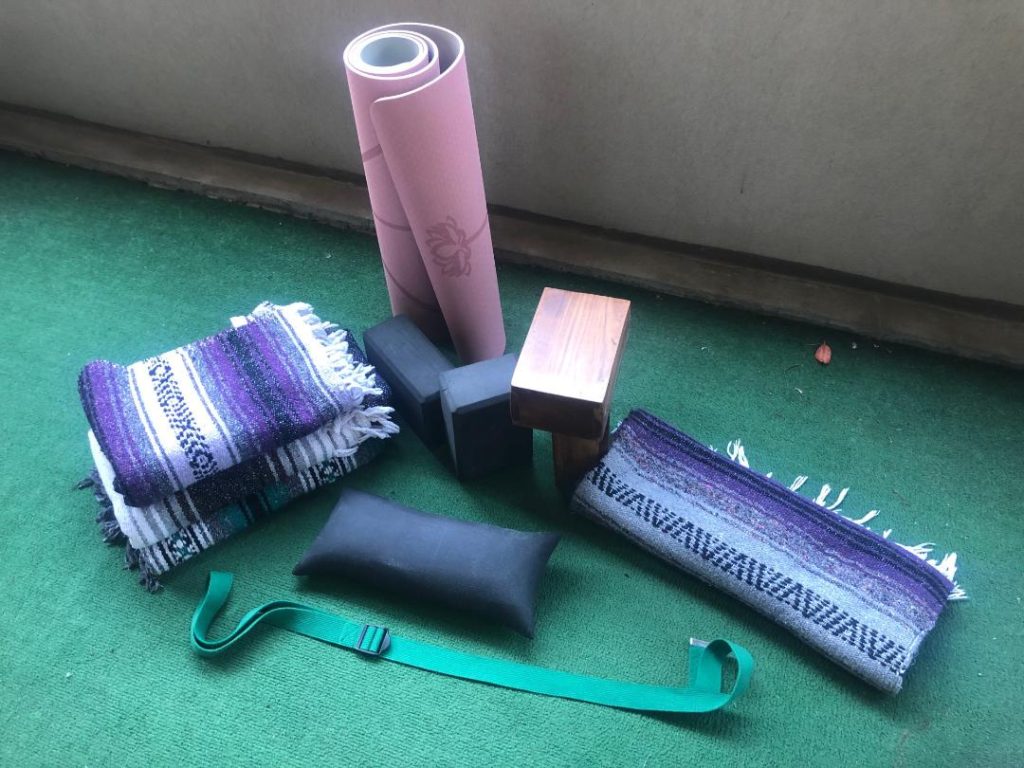
Examples of How I Use My Yoga Props
Swastikasana (Cross-legged pose)
Swastikasana is one of the preferred postures for meditation. In Sanskrit, “swastika” means “well-beingness,” which is the state we aspire to while meditating. The pose can be easy for children but very difficult for adults whose modern office lifestyle leads them to spend long hours sitting in chairs resulting in tightness in the hips and pain in the knees. It is impossible to meditate when uncomfortable not to mention attain the state of well-being. Yoga props such blankets, bolsters, and blocks makes this pose accessible to all. Swastikasana then truly becomes a pose that creates the calm and relaxation you need to enter deep meditation. Additional benefits of sitting in this posture include a stronger core and greater flexibility in the groin and inner thigh area. It also reduces inflammation in the knees and veins.
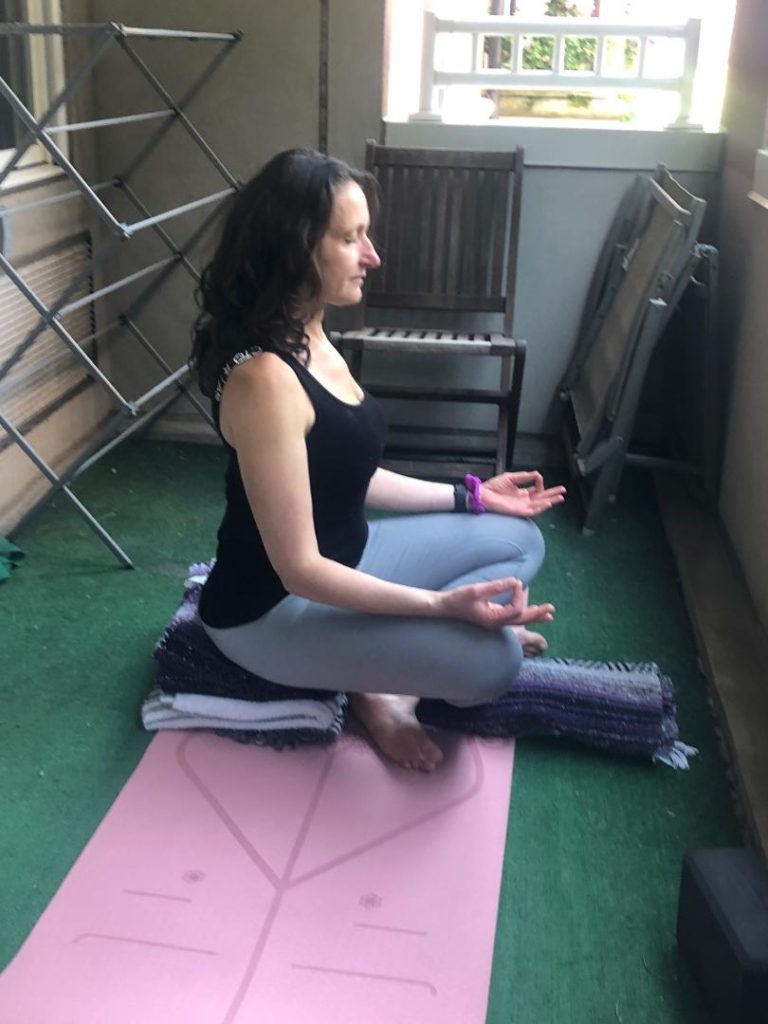
Uttanasa (standing forward bend)
Uttanasa is a foundation pose for beginner yoga practitioners. The word “uttana” means “intense stretch.” Contrary to popular belief, the purpose of this pose is not to reach your toes with your fingers. Rather, it is to extend the entire back body from the soles of the feet, to the backs of the legs, to the lower, middle, and upper back, and ending at the crown of the head. Yoga props such as blocks make this pose accessible to all and help avoid collapsing and hyperextending. When done properly, Uttanasa alleviates tension, calms the mind, and cures insomnia. It also helps improve posture, increases hip, hamstring, and calve flexibility, strengthens the legs, thighs, and knees, and improves digestion by stimulating the liver and kidneys.
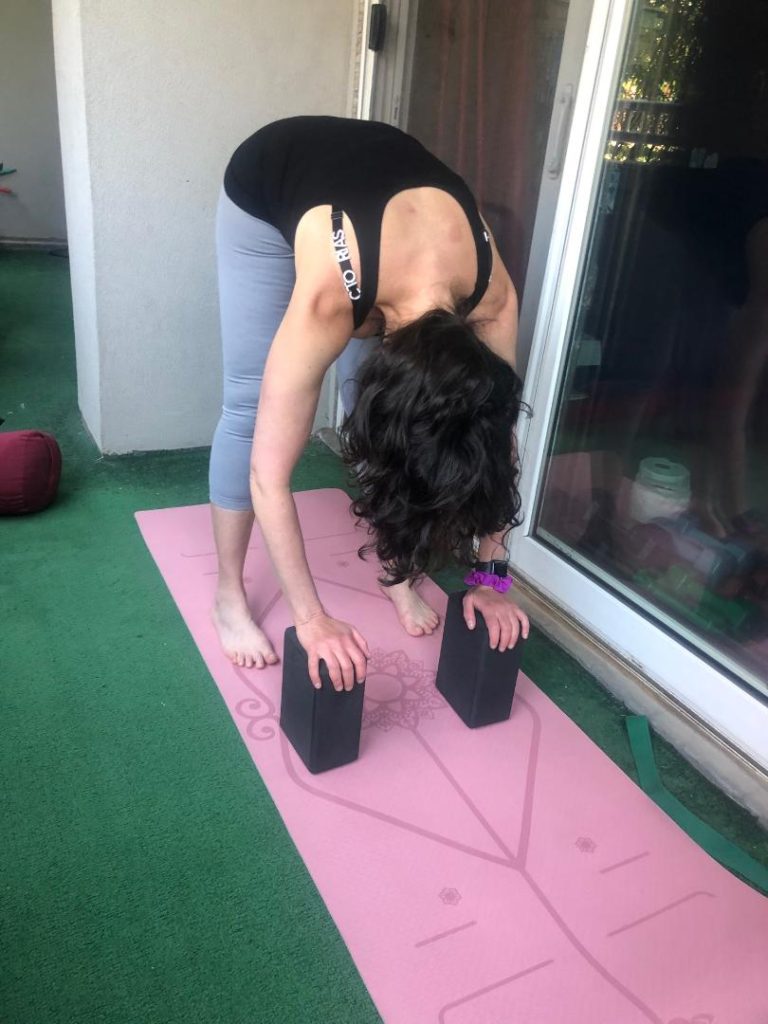
Paschimottanasana (seated forward fold)
Paschimottanasana is another pose from the beginner series. The word “paschima” mean “west” or “the back of the body” and the word “uttana” means “intense stretch” in Sanskrit. Like Uttanasa, its standing cousin from above, Paschimottanasa is not simply collapsing your upper body so that you can reach your toes. The pose looks deceivingly easy, but, when done with awareness and muscle control, helps stretch the entire spine, lengthens the legs, opens the hips and buttocks, and calms the mind. The yoga belt makes the pose accessible to students of all flexibility levels without straining. This asana also soothes the adrenal glands, tones the kidneys, bladder, and pancreas, and stimulates the digestive and reproductive systems.

Standing Pelvic Leg Lift
Although this is not an official yoga pose, it is often taught in Iyengar Yoga studios as it develops stability and strength in the hips and side glutes. The goal of this pose is to try to keep the floating foot and hip on the same plane as the supported foot and hip. Of course, the pose is repeated on both sides.

Setubandha Sarvangasana (supported bridge pose)
Setubandha Sarvangasana is a beginner back-bending posture. In Sanskrit, “setu” means “bridge,” “bandha” means “formation,” “sarvanga” means “entire body,” another words, a bridge that is created using your entire body. Putting the block under your sacrum turns this into a restorative or resting posture while stretching your chest, thoracic region, abdomen, and hips and strengthening your back, glutes, thighs, and ankles. This asana helps regulate blood pressure, relaxes the mind, improves digestion, relieves menstrual cramps and menopausal symptoms, energizes the body, and reduces respiratory problems. The chin lock in this pose activates the flow of blood to the heart and neck and head glands, which decreases thyroid issues.

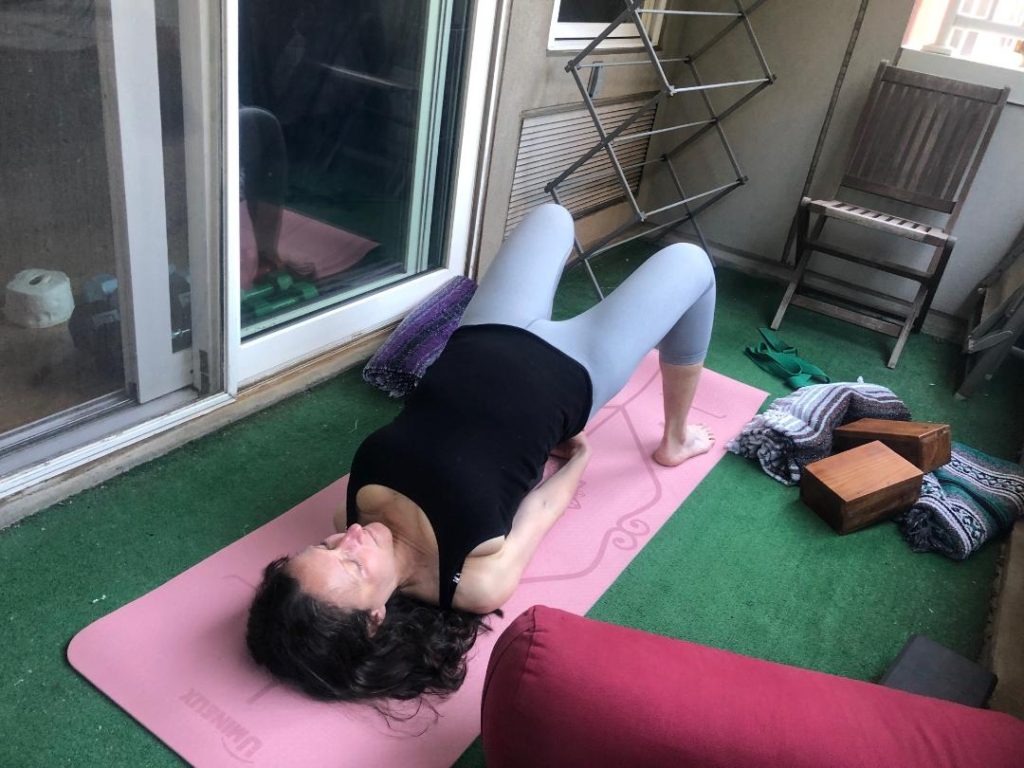
Supta Baddhakonasana (reclined cobbler’s pose)
Supta Baddhakonasana is a restorative pose from the hip-opening asana series. It is generally practiced at the beginning or end of the yoga session. Translated from Sanskrit, “supta” means “reclining,” “baddha” means “fixed” and “kona” means “angle.” It is a common misconception that you should try to push the knees closer to the floor in this pose to increase the stretch in the inner thighs and groins. However, doing so will have the opposite affect and cause your groins, lower back, and abdomen to harden and strain. To prevent this unintended affect, use a bolster to support your back and lift your chest, a blanket on top of the bolster to support your head, blankets below the legs support the thighs, and the belt to helps maintain the angle of your legs and hold your feet together. Among the numerous benefits of this pose include:
- Stimulation of the heart and improvement of blood circulation;
- Improved flexibility of the inner thighs, groins, knees, hip flexors, back, and elbows;
- Reduction of stress and soothed nervous system;
- Eased symptoms of puberty, menstruation, menopause, and depression;
- Stimulation of the abdominal organs, including ovaries, prostate gland, bladder, and kidneys;
- Regulation of blood pressure;
- Helping with insomnia;
- Improving digestion;
- Helping prevent hernia and pelvic organ prolapse.
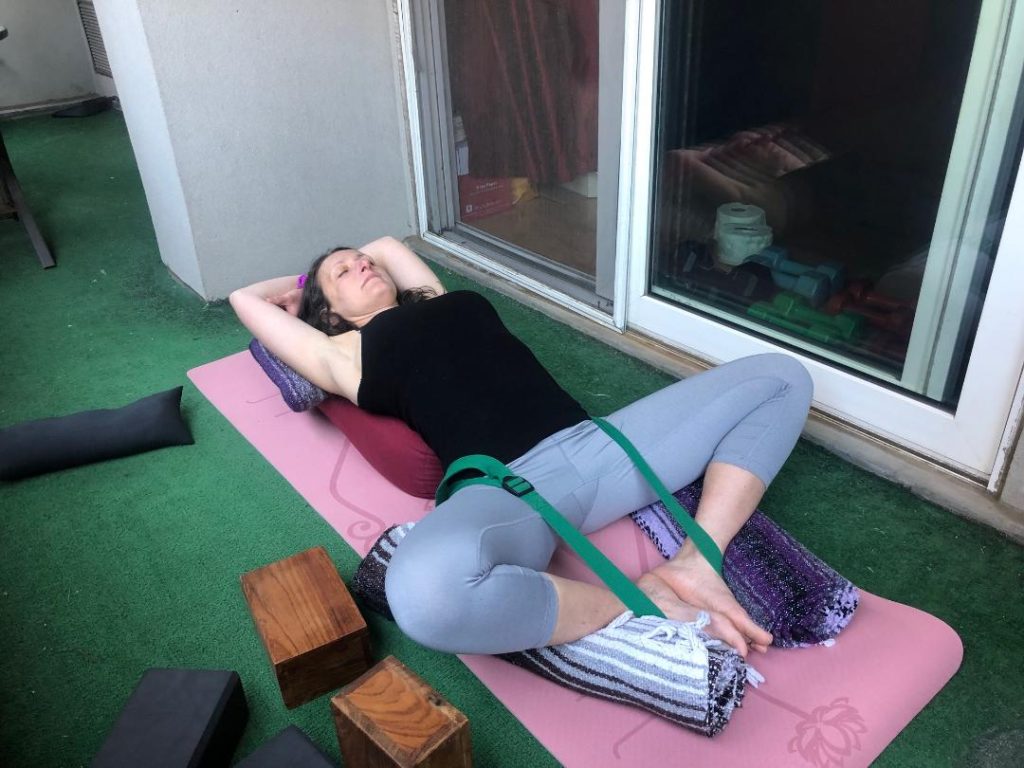
Viparita Karani (legs up wall pose)
Viparita Karani is a restorative inversion. The word “viparita” stands for “upside down” and “karani” stands for “doing” in Sanskrit. This pose can be difficult for people with stiff backs. The wall supports the legs and the bolster supports the back and buttocks. The sandbag provides added weight to ground the body. It relieves aching legs and feet and prevents varicose veins, stretches the leg and hamstring muscles, and helps lower back pain. It also helps alleviate nervous exhaustion and depression. It regulates blood pressure, relieves respiratory ailments, and relieves digestive disorders.

Iyengar Yoga Books
I personally read every book published by B.K.S Iyengar and more. My personal recommendations that I refer to all the time are:
B.K.S. Iyengar Yoga: The Path to Holistic Health by B.K.S. Iyengar
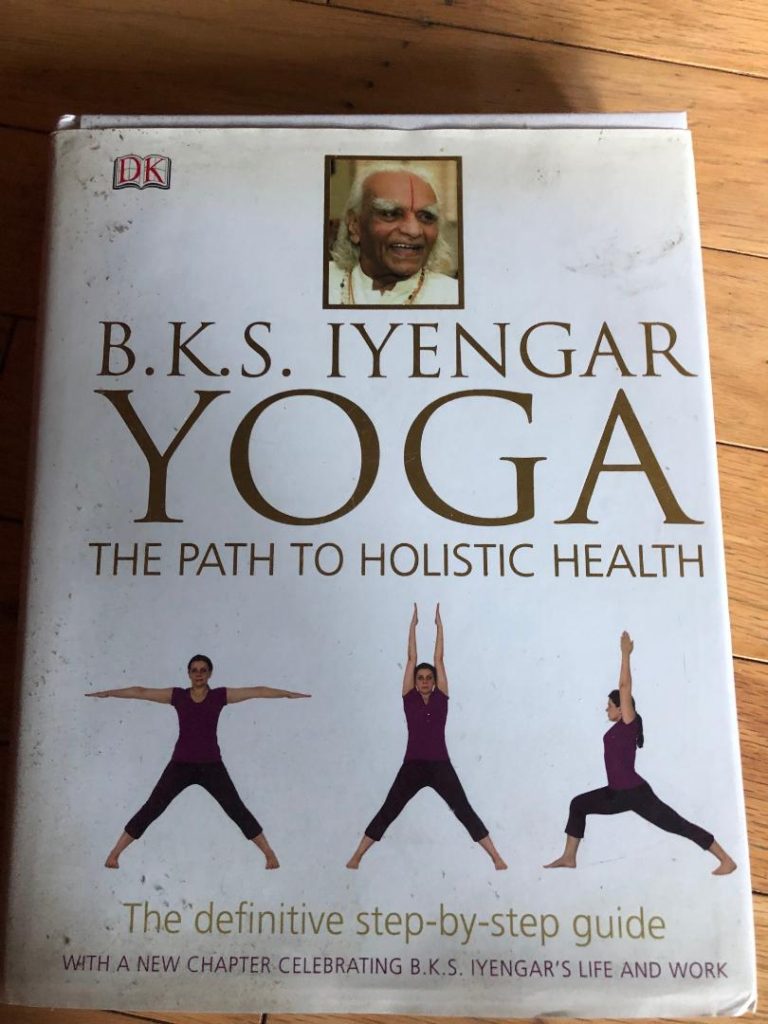
Light on Yoga: The Bible of Modern Yoga by B.K.S. Iyengar
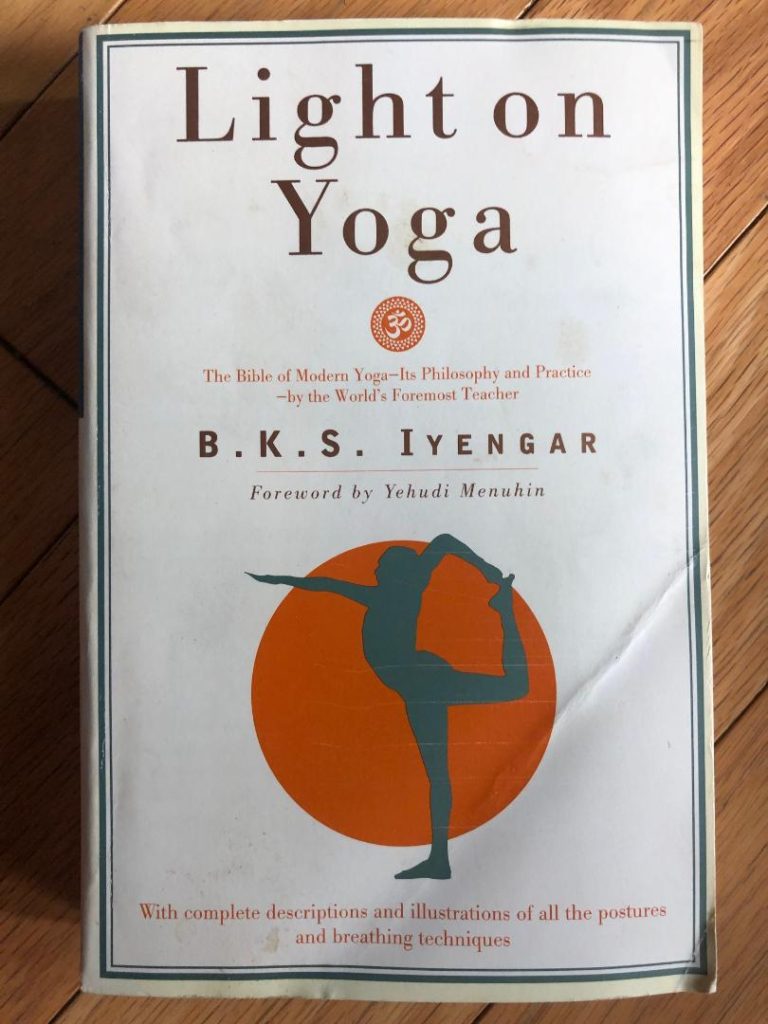
Light on Life: The Yoga Journey to Wholeness, Inner Peace, and Ultimate Freedom by B.K.S. Iyengar, John J. Evans, and Douglas Abrams
I also enjoyed reading B.K.S. Iyengar’s biography A Life of Light by Rashmi Palkhivala
Iyengar Yoga Studios
Because it is not a quick weight loss sweat generating type of exercise, Iyengar yoga is not one of the more popular yoga styles on the Western market. Iyengar yoga uses a slow progression rather than a show off at how flexible you are and what contortion you can get into as quickly as possible type of methodology. Unfortunately, not many yoga studios offer Iyengar yoga classes. If they do, it is usually a very limited number of classes out of the whole schedule.
To find a CYIT, I recommend visiting the B.K.S. Iyengar website. The “Teachers” link will provide you a list of CYIT all over the world. You will be able to find the contact information of the listed teachers even if they do not teach in studios but only offer private lessons.
My personal experience is with the Iyengar Yoga Institute of New York and the Brighton Yoga Studio. I have tried numerous teachers from each studio and can only say positive things about each and every single one. I recommend not to limit yourself to any one particular teacher as you will gain different perspectives and approaches from every teacher you try.
Please feel free to reach out to me with any questions on the Contact Us page.
Leave a comment and let me know which teachers you’ve tried!
Thanks for reading and welcome to the wonderful world of Iyengar Yoga!
P.S. Please consult a physician to confirm Iyengar Yoga is right for you.


